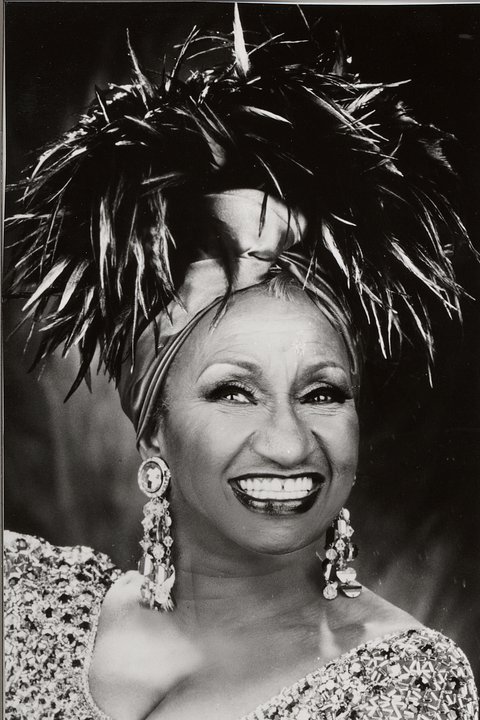
Join us again next week for PEOPLE IN AMERICA in VOA Special English.The queen of Salsa was born on October 21st, 1925 in Santos Suarez de La Habana. I’m Steve Ember.įAITH LAPIDUS: And I’m Faith Lapidus. STEVE EMBER: This program was written and produced by Dana Demange. Cruz reminds her listeners to live their lives fully and enjoy every moment. We leave you with the song “Rie y Llora” from Celia Cruz’s last album. Actors, politicians, musicians as well as thousands of fans attended to say goodbye to the Queen of Salsa. Hundreds of thousands of people attended the funerals. In two thousand three, Celia Cruz died as a result of brain cancer.

She was a strong and powerful woman in a music industry made up mostly of men. With her seventy albums, she became the most famous voice of salsa music.
#Celia cruz full
Here is Cruz performing the song “Guantanamera” from the sound track of this movie.įAITH LAPIDUS: Celia Cruz enjoyed a full and successful life. Not surprisingly, Cruz plays the part of a salsa singer. One of her most well known roles was in the film “The Mambo Kings” in nineteen ninety-two. She also sang with musicians such as David Byrne and Patti Labelle. For example, she sang with the hip-hop singer Wyclef Jean on one of his albums. She sang many songs with musicians that were not salsa performers. She said that her music taught the world about Cuban cultureĬelia Cruz always enjoyed taking on new projects. You can hear her saying this word in many recordings. Cruz would shout out this word to energize her band and her audience. STEVE EMBER: During the nineteen seventies Celia Cruz became famous for calling out “Azúcar!” while singing. Here is a recording of Cruz singing “Isadora” with Johnny Pacheco and the Fania AllStars. Her face was often painted with bright makeup.Īnd her dancing was as energetic as her voice. She would wear wildly colorful clothing with tall shiny shoes. She performed and made records with many musicians. This music expressed the happiness and the pain of life in Latin American communities.Ĭelia Cruz soon became the voice of salsa. The music known as salsa was a combination of Cuban “son” with other Latin sounds. Many musicians were experimenting with mixing different traditions, rhythms, and styles. But it was time to explore new musical choices.įAITH LAPIDUS: Celia Cruz lived in New York City where Latin music could be heard in many forms. They had played together for fifteen years. Soon Cruz and her husband separated from La Sonora Matancera. She later became an American citizen and never again returned to her country.Ī few years later, she married the trumpet player of her band, Pedro Knight. Like many other Cubans, Celia Cruz decided to move to the United States. After a revolution, the communist leader Fidel Castro took power in the country. STEVE EMBER: In the early nineteen sixties, great political changes took place in Cuba. Cruz tells about a candy seller singing in the streets about his delicious goods. Here is another of her songs recorded with La Sonora Matancera. But soon, they fell in love with the powerful voice of Celia Cruz.


She was the most famous voice of salsa musicĪt first, listeners missed the band’s former singer. When the group heard Celia’s voice, they hired her immediately.

Their lead singer had just left the band, so they needed a new performer. This group of was one of Cuba’s most famous orchestras. She was discovered a few years later by the music group La Sonora Matancera. It is music made for dancing.įAITH LAPIDUS: In nineteen forty-seven Celia started studying at the Cuban Conservatory of Music. This Cuban music or “son” is defined by the beat of the drum and the call of the singer. These kinds of songs were influenced by the music of Africa and Spain. She could listen to dance music like the rumba, mambo and guaracha. Famous music groups and singers would perform live on the radio. During the nineteen thirties and forties in Havana, Celia heard many kinds of music. STEVE EMBER: Music is an important part of the cultural life of Cubans. She said that her music taught the world about Cuban culture and the happiness of living life to the fullest. She later said that she was both a singer and a teacher. Later, as a teenager Celia started competing in singing contests. Celia would often sing at school and community gatherings. Her grandmother once said that Celia could sing before she could talk. But music played an important role in her childhood. Celia made about seventy albums and won many awardsįAITH LAPIDUS: Celia Cruz was born in nineteen twenty-five in Havana, Cuba.


 0 kommentar(er)
0 kommentar(er)
